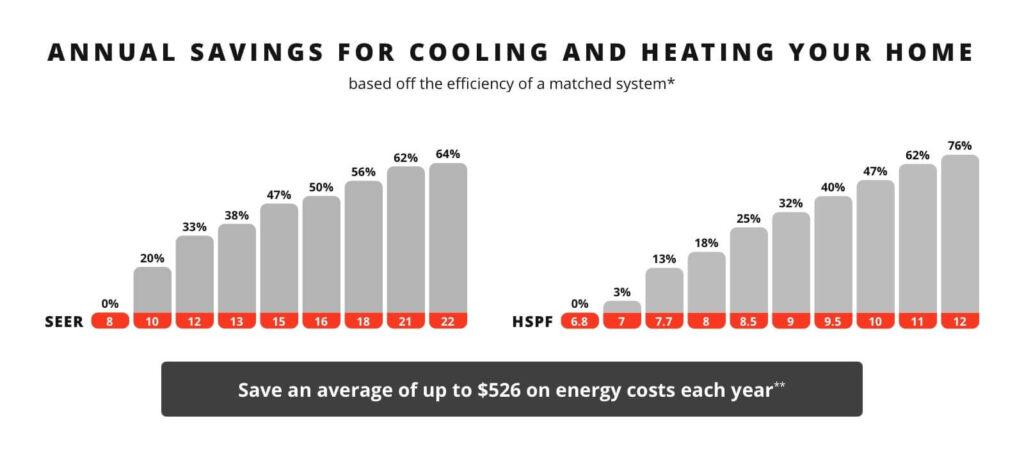Heat Pumps: The Smart, Low-NOx Replacement for Gas-Heated Homes
Learn about heat pumps — a smart way to heat and cool your home.
Don’t be fooled by the name: Electric heat pumps serve as an air conditioner in the hot months as well as a heat source when temperatures drop. While the technology has been around since the 1940s, today’s models are far more efficient for heating and cooling than earlier generations. As a result of a number of advantages, energy and environmentally conscious homeowners are finding heat pumps to be a cost-effective solution compared to using separate air conditioning and furnace equipment.
New low NOx regulations affect how you heat your home
California has long been a national leader and trendsetter on environmental initiatives, and nowhere is that truer than reducing greenhouse gas emissions. As you may have heard, certain areas of California are regulating the nitrous oxide (NOx) emissions of gas furnaces starting later this year, in an effort to achieve an economy-wide reduction of 40% in greenhouse gasses by 2030. Greenhouse gas emissions attributable to residential buildings in California currently represent about 25% of the state’s total emissions.1
Not only is this important in addressing climate change, it could improve public health in the state. Reducing emissions helps eliminate a major source of indoor air pollution linked to respiratory illnesses such as asthma. It could also improve access to affordable housing by helping developers to build more quickly and cost effectively without gas hook-ups.2
How heat pumps work
When it's cold outside, a heat pump extracts heat from the outdoor air and transfers it inside—that’s right, even in lower temperatures, the outside air contains enough heat to warm your home. During warm days, it reverses directions and acts like an air conditioner, removing heat from your home. One advantage of a heat pump is that it doesn’t create heat by burning fossil fuels, which produces combustion by-products (greenhouse gasses) that must be vented to the outdoors.
Energy analysts encourage the installation of high-efficiency HVAC heat pumps rather than standalone central air conditioning units plus gas furnaces whenever possible.3 In areas where outside temperatures frequently fall below 40 degrees, you may need an alternate heat source (electric heat strips or a furnace) to maximize the effectiveness of heat pump heating. If you choose to supplement heat with a gas furnace, it’s still an option—with the caveat that new low NOx furnaces are required to meet the new state regulations and the new US Department of Energy efficiency standards for residential furnace fans.
Two ways heat pumps can save you money
The older your total system is, and the larger, older, or less-energy efficient your home is, the greater the opportunity for energy savings by upgrading to a new higher efficiency heat pump. In addition, the higher the efficiency of the heat pump—using technologies such as two-speed compressors and variable-speed motors—the greater the likelihood that you will see a benefit in lower monthly utility bills.
First, heat pumps can save you on your bills year-round. The difference is particularly notable for heating: Based on Southern California’s mild climate, heat pump space heating averages about 4 to 6 times greater efficiency than natural gas furnaces.4 Broken down in terms of your monthly energy bills, that could mean savings of $10 to $60 each month on average.5 Keep in mind, over the long term bill savings for HVAC heat pumps could increase if gas retail rates keep increasing faster than electric rates.
Second, in many cases it can save money to install or retrofit a standalone heat pump unit compared to the combination of an air conditioner plus gas furnace.6
See how much you can save with an ultra-efficient heat pump

The higher the system SEER and HSPF ratings, the more comfort you’ll get from each energy dollar.
Looking to the future, helping the environment
According to a Natural Resources Defense Council study, a new air-source heat pump can reduce greenhouse gas emissions by 46 to 54 percent over its lifetime compared to natural gas alternatives. In addition, electric heat pump options are only going to get more and more affordable as the market transforms, while gas prices may continue to increase much faster than electricity.
The bottom line
Switching to a heat pump for increased home comfort, more year- round efficiency, and lower emissions is a win for you — and it’s the responsible thing to do for the quality of life in our region of California. Your local American Standard Customer Care Dealer can help you find the heating solution that’s right for your home.
- Residential Building Electrification in California, April 2019. Energy and Environmental Economics. Page i.
- Journalist’s Guide to Building Electrification in California. July 14, 2019. Building Decarbonization Coalition. http://www.buildingdecarb.org/resources/journalists-guide-to- building-electrification-in-California
- Residential Building Electrification in California. April 2019. Energy and Environmental Economics. Page 27.
- Residential Building Electrification in California. April 2019. Energy and Environmental Economics. Page 86.
- Journalist’s Guide to Building Electrification in California. July 14, 2019. Building Decarbonization Coalition. http://www.buildingdecarb.org/resources/journalists-guide-to- building-electrification-in-California
- Residential Building Electrification in California. April 2019. Energy and Environmental Economics. Page viii.



